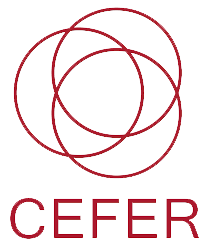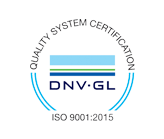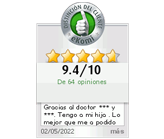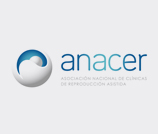Infertility is one of the biggest concerns for couples who want to have children. Fortunately, thanks to advances in medical technology, there are several treatment options to help couples conceive. Two of the most common methods of assisted reproduction are artificial insemination and in vitro fertilization. But what is the best option for you? In this post, we’ll explore the pros and cons of each method to help you decide.
Contenidos
What is artificial insemination?
Artificial insemination is a process in which spermatozoa are introduced directly into the woman’s uterus during her fertile period. This process is carried out in an assisted reproduction clinic and is relatively simple. In general, artificial insemination is recommended for couples who have mild or moderate infertility problems, such as low sperm count, problems with ovulation, or hostile cervical mucus.
Advantages of artificial insemination?
One of the biggest advantages of artificial insemination is that it is a less invasive and less expensive procedure than IVF. In addition, the recovery time is less and the process itself is relatively simple. The success rate for artificial insemination varies depending on several factors, such as the woman’s age and sperm quality, but in general, the average success rate is 10 to 20 percent per cycle.
Disadvantages of artificial insemination
However, there are some drawbacks to artificial insemination. One of the biggest disadvantages is that insemination cannot be guaranteed to result in pregnancy. In some cases, it may be necessary to perform several rounds of insemination to achieve success. Also, artificial insemination is not a good option for couples who have more serious fertility problems, such as blocked fallopian tubes or endometriosis.
[ cta_generico id=4667]
What is in vitro fertilization?
On the other hand, in vitro fertilization (IVF) is a more complicated process in which the woman’s eggs are extracted and fertilized in a laboratory with the sperm of her partner or a donor. The resulting embryos are cultured in a laboratory for several days before being transferred to the woman’s uterus. IVF is an option for couples with severe fertility problems, such as blocked fallopian tubes, endometriosis, or unexplained infertility.
Advantages of in vitro fertilization
One of the biggest advantages of IVF is that it has a higher success rate than artificial insemination. In general, the average success rate for IVF is 30 to 40 percent per cycle, although this rate varies depending on several factors, such as the woman’s age, sperm quality, and the number of embryos transferred.
Disadvantages of in vitro fertilization
However, IVF also has some drawbacks. First, it is a more invasive and expensive procedure than artificial insemination. Also, the recovery process can be longer and there is a higher risk of complications, such as ovarian hyperstimulation. Additionally, IVF can be an emotionally difficult process for couples, as it involves many trips to the assisted reproductive clinic, medication, and invasive procedures.
The importance of the woman’s age
Another factor to consider when deciding between artificial insemination and IVF is the age of the woman. Age is one of the most important factors influencing fertility. Women over the age of 35 are less likely to get pregnant through artificial insemination and therefore may need to consider IVF. Additionally, women over the age of 40 may have trouble producing viable eggs, which may make IVF the only viable option.
It is important to keep in mind that every couple is unique and what works for one couple may not work for another. Before making a decision, it’s important to speak with a fertility specialist to discuss your options and assess your individual situation.
[ cta_generico id=4667]
Conclusion
In conclusion, artificial insemination and IVF are two popular options for couples having trouble conceiving. Artificial insemination is a simpler and less expensive option, but it also has a lower success rate and is not suitable for all cases of infertility. IVF is a more invasive and expensive option, but it also has a higher success rate and may be the only viable option for couples with severe fertility problems. In the end, the decision of which option to choose will depend on many individual factors, such as age, health and the situation of the couple.















 We use our own and third-party cookies to analyse the use of the website and to show you advertising related to your preferences based on a profile of your browsing habits (e.g. pages visited).
We use our own and third-party cookies to analyse the use of the website and to show you advertising related to your preferences based on a profile of your browsing habits (e.g. pages visited).